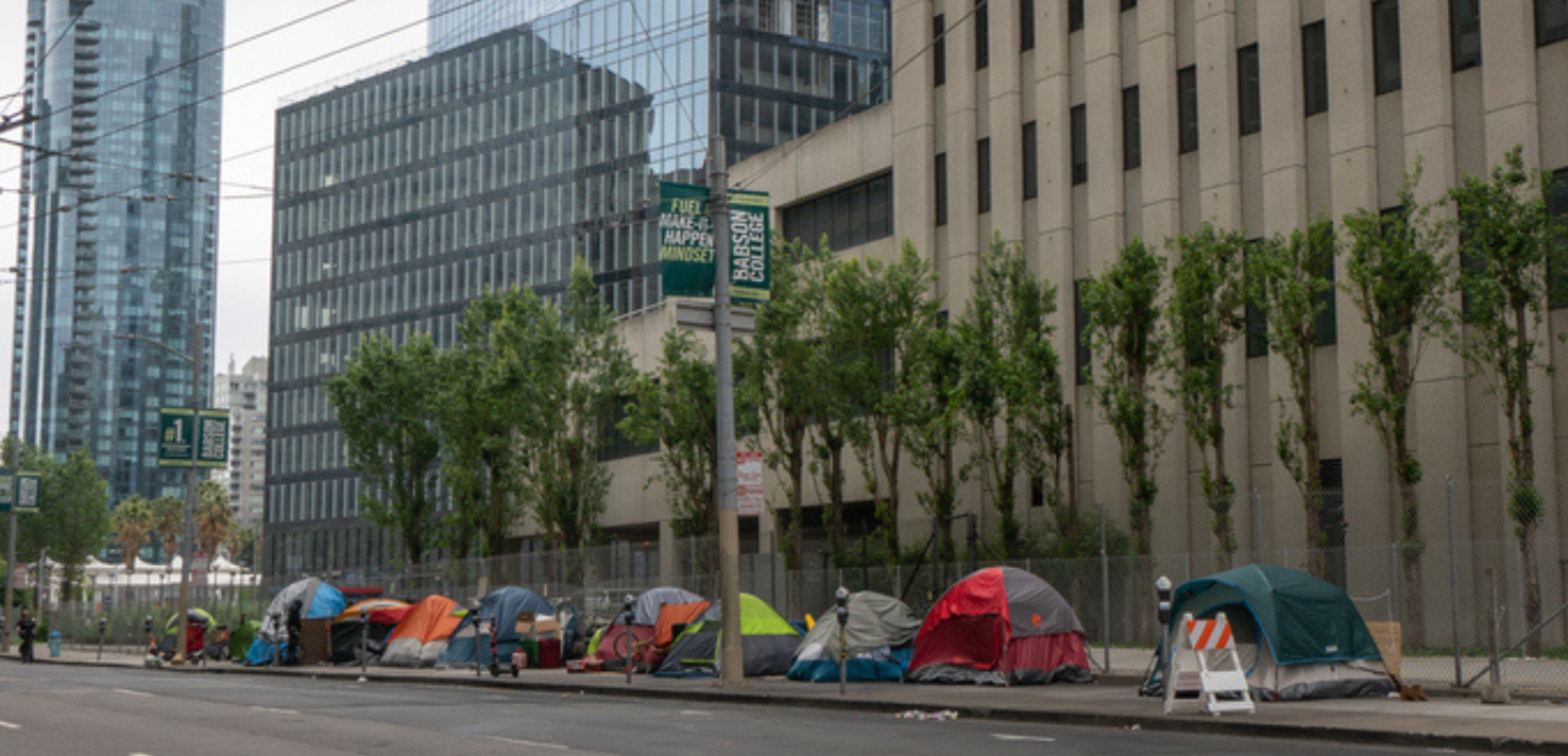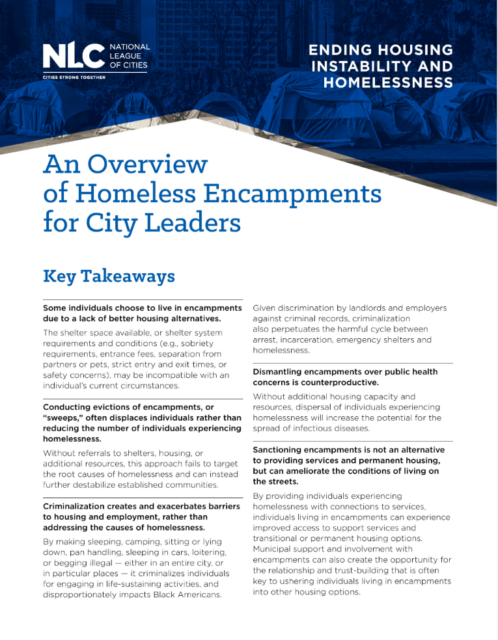Understanding encampments for more compassionate and effective solutions
Without sufficient resources to shelter and house the growing population of unhoused people, the number of encampments has grown in cities nationwide. Community responses to encampments varies and is dependent upon competing priorities of a diverse group of stakeholders, including encampment residents, business owners, public health and safety officials, community residents and advocates. Understanding both the reasons why individuals experiencing homelessness live in encampments and how servicing encampments can advance a city’s homelessness response is central to developing a more compassionate and effective local government approach to encampments.
Homelessness is first and foremost the result of a severe shortage of affordable housing, poverty and insufficient resources. Encampments are a visual representation of the lack of those resources and of policy failures.
This overview provides local leaders with an understanding of the complex network of factors that lead individuals to live in encampments and offers alternatives to encampment sweeps.
Key insights from this overview include:
- What encampments are and why individuals choose to live in them
- The detrimental impact of encampment sweeps without referral to shelters, housing or additional resources, particularly on Black, Hispanic/Latino, Indigenous, Pacific Islander and LGBTQ+ populations who face disproportionately high rates of homelessness
- The long-term impacts of the criminalization of homelessness and how it exacerbates barriers to housing and employment, rather than addressing the root causes of homelessness
- Case studies and recommendations for responding effectively and empathetically to the growing prevalence of homeless encampments
By recognizing the damage done by clearing encampments without providing comprehensive support, city leaders can pivot to directing resources toward assisting people with moving out of encampments and into safe, quality and affordable housing to end unsheltered homelessness, prevent recurring homelessness and ending homelessness altogether.










